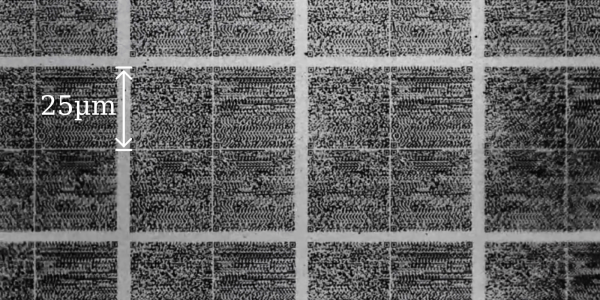Most of us will at one point have run out of storage and either had to buy a larger driver or delete some of those precious files. This problem can happen to data centers, too, with the ever-increasing amount of data stored on servers across the world. [Cerabyte] aims to fix this, with their ceramic-based media promising 1 TB/cm² of areal density.
To put into perspective just how much better this density is, we can compare it against SSDs and hard drives. At the time of writing, the densest SSD (NAND flash storage) is claimed to be 0.1825 TB/cm² and the densest hard drive is claimed to be 0.1705 TB/cm², which means 5.48 times and 5.87 times more dense respectively. The density improvement doesn’t end there — both an SSD and a single HDD platter might be a couple millimeters tall, while a [Cerabyte] layer claims to be merely 50 atoms tall.
[Cerabyte] aims to create 10 PB (10,000 TB) and later 1 EB (1,000,000 TB) racks with their technology, a feat difficult to achieve with mere hard drives. The ceramic-based media is written to using lasers and read from with a microscope, though throughput is limited to a “mere” 1 GB/s, which means filling that one rack could take as long as 110 days. Despite the relatively slow access times, we think this new storage technology is impressive, assuming [Cerabyte] succeeds.
Do you need so much storage that even [Cerabyte] can’t satisfy your needs? Simply use YouTube as infinite storage!











